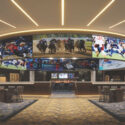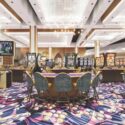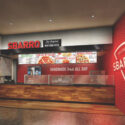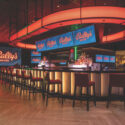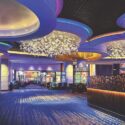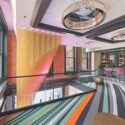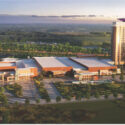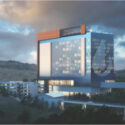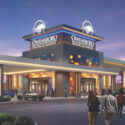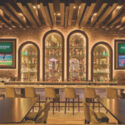The casinos of today are a far cry from the heavily themed, insular structures of the past. By letting go of long-held notions of what a casino should look like, present-day gaming venues are honest, inventive environments that reflect the tastes of an ever-changing world.
But how can you achieve authenticity in an environment designed to transport people from reality? How do you create different and new experiences in these venues over time?
In recent years, the casino industry has experienced a major upswing both stateside and abroad. With new markets comes an increase in demand and competition, requiring owners to create ever more impressive environments. The formulaic, themed approach of traditional casinos has been rejected in favor of site-driven, authentic designs that pay homage to the region and its rich history. Yet today’s patron still seeks comfortable and familiar gaming venues.
Ultimately, the key to success in an ever-changing industry is to develop venues that stand apart as creative interpretations of the casino’s brand and location, rather than those that simply mimic the successes of other properties, places or times.
Originally defined as nothing more than “rooms for gambling,” casinos have traditionally been built around a long-held set of design standards. For many years, due to the absence of competitors, the small gaming community in Las Vegas dictated the look of such spaces. With no one to challenge long-held beliefs, the status quo of windowless boxes continued. While these artificial environments proved successful for many years, developers saw their profits steadily dwindle as new markets drew people to alternate venues across the globe.
In danger of becoming little more than a cliché tourist destination, developers looked for solutions to reestablish Las Vegas as the premier venue for entertainment and game playing. By fusing the unique geography, history and demographics of a property with the investor brand profile, more impressive environments are being realized.
Further, through inventive use of material, color, form, pattern and texture, a reflection of this new brand identity is evident in the interior spaces. Authentic to the site, patronage and casino brand, present-day gaming venues offer a range of diverse experiences for an increasingly sophisticated clientele.
By remaining flexible and open-minded, present-day casinos have become one-stop resort destinations complete with hotels, restaurants, high-end shopping, spas and more. For the casino owner, the plug and play of vendors lends further versatility and profitability.
Such environments challenge the expected notion of what a casino is by allowing the gaming portion to exist in concert with other income-producing venues. By some findings, the monies brought in from such “secondary spaces” can account for up to 50 percent of the casino’s total revenues.
Developers pushed the limits and thinking even farther outside the box-literally. The addition of windows to let in the outside environment was a radical move that ultimately proved genius. Plants, natural materials, elemental features and even outdoor settings for patrons soon followed. What once was a space disjointed from reality became tangible, authentic and in very high demand.
Today’s savvy casino owners stand on a platform of environmental awareness, economic security, a return to community and personal wellness. In the relatively recent Smart Growth movement, one can see the future of the gaming industry. Advocating attractive communities with a strong sense of place, community-stakeholder collaboration and mixed land uses for development projects, this new trend in urbanism fosters quality of life as well as economic prosperity.
The most recent proposals incorporate museums, nonprofits and cultural institutions into their venues; some include plans to rehabilitate former industrial areas in decline.
Such development is a win-win for all involved: the tax revenue for casino projects nationwide has doubled in the last 10 years, totaling $5.79 billion last year.
Importantly, this new model for casino design has changed the attitudes of those who visit casinos too: in a 2007 survey, 69 percent of respondents agreed that casinos bring widespread economic benefits to other industries and business within the region.
Squaring off against long-standing notions of what a casino should be isn’t always comfortable. But for those brave enough, the rewards are plenty.



